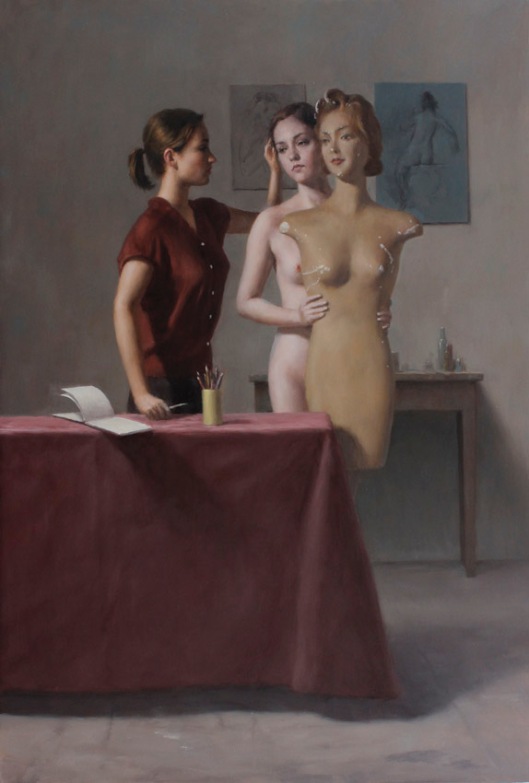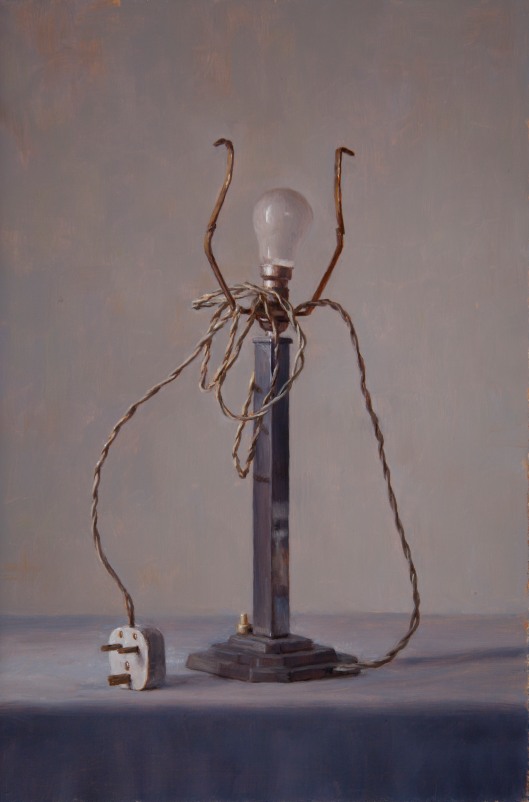I don’t usually have a psychological plan or reason for a painting, I just come across an image by working through ideas I’ve got from observation, developing themes in past paintings or stealing from another artist. The mood or meaning i.e. sombre, funny, ironic, light-hearted, enigmatic or mystifying is refined through a process of feeling, trial and rejection, not analysis or clear decision. That way I’m not altogether responsible for the results and not necessarily the best judge of their meaning. In fact often it’s not until after finishing that I can come to a view of what the thing could be about. The best images hover between several different interpretations and are decided on by the viewer based on their own experiences and state of mind.
For example, in this painting “Kiss” I removed any contact between the girls other than the touch of the cheek making a coldness at variance with the normal meaning of the act and by emphasising the lips and the ear turned it halfway to a whisper. Using also the compositional device of two opposing curves (necks and ponytails) giving in my mind a sense of conflict.
In still life it’s often easier to play around with the sense of things. The arms and flex in this painting “Lamp” could have given any number of different feelings than the jaunty one I chose.
Sometimes things can turn on a type or character as in this one “Painter”. I went through three or four male models before making up this combination of qualities reminiscent of 60’s illustration types.
With more complex narratives such as “Model” at the top, and “Wait”, below, I get to the point where all I’m concerned to do is remove as many particular interpretations as possible and let the scene play out of it’s own accord.
At least that’s how it feels.




